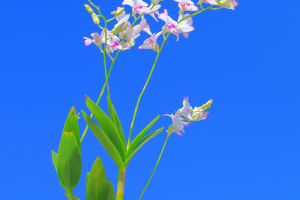Echinopsis tubiflora, commonly known as the Lily cactus or the Night-blooming Cereus, is a stunning and unique succulent native to South America.
Renowned for its magnificent night-blooming flowers and distinctive tubular shape, this cactus is a favorite among collectors and enthusiasts alike.
However, like all plants, Echinopsis tubiflora requires proper care and attention to thrive, particularly when it comes to watering.
Understanding the watering needs of Echinopsis tubiflora is crucial for ensuring its health and vitality. As a desert plant, this cactus is adapted to arid conditions and prefers well-draining soil that mimics its natural habitat. Overwatering can be detrimental to Echinopsis tubiflora, leading to root rot and other moisture-related issues. Therefore, it is essential to strike the right balance between hydration and dryness to promote optimal growth and blooming.
The watering time and frequency of Echinopsis tubiflora largely depend on various factors, including environmental conditions, soil type, and the plant's stage of growth. During the growing season, which typically spans from spring to early fall, Echinopsis tubiflora requires more frequent watering to support active growth and blooming. However, as the weather cools down and the plant enters dormancy in the winter months, watering should be reduced to prevent waterlogged soil and root rot. A general rule of thumb for watering Echinopsis tubiflora is to allow the soil to dry out completely between waterings. This helps prevent the risk of overwatering and ensures that the plant's roots receive adequate oxygen.
When watering, it is essential to water deeply, thoroughly saturating the soil until water drains out from the bottom of the pot. This encourages the plant's roots to grow deeper into the soil, promoting overall plant health and stability. In terms of watering frequency, Echinopsis tubiflora typically requires watering once every 1-2 weeks during the growing season, depending on environmental conditions such as temperature and humidity. In hot and dry climates, more frequent watering may be necessary to prevent the soil from drying out too quickly. Conversely, in cooler and more humid conditions, watering can be reduced to prevent waterlogging and fungal diseases.
It is also important to adjust the watering frequency based on the size of the pot and the type of soil used. Larger pots with greater soil volume retain moisture for longer periods, while pots with well-draining soil dry out more quickly. Therefore, it is essential to monitor the moisture level of the soil regularly and adjust watering accordingly to prevent under or overwatering.
Another important consideration when watering Echinopsis tubiflora is the timing of watering. Watering in the morning is generally preferred, as it allows the plant's foliage to dry out quickly, reducing the risk of fungal diseases. Avoid watering in the evening or at night, as this can prolong the period of moisture on the plant's leaves and increase the likelihood of fungal infections.
Understanding the watering time and frequency of Echinopsis tubiflora is essential for promoting optimal growth and blooming. By allowing the soil to dry out completely between waterings and adjusting watering frequency based on environmental conditions, pot size, and soil type, enthusiasts can ensure the health and vitality of their Lily cactus. With proper care and attention, Echinopsis tubiflora will reward growers with its spectacular night-blooming flowers and striking tubular form, bringing joy and beauty to any collection.


